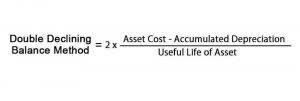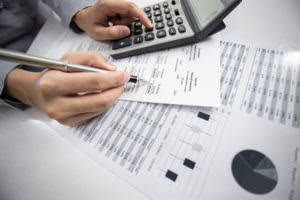Content
Bank reconciliations are an internal control for most companies. It’s a way to detect fraud and prevent errors from occurring, and most importantly, to validate that the cash on the balance sheet is, in fact, accurate. In addition to the bank statements, additional supporting documentation is obtained to validate the completeness and accuracy of these discrepancies between the two systems. For A/P transactions, after a processed check is reconciled with the bank, the system debits the VAT A/P Paid account. The longer you wait to reconcile your accounts, the more time and work you’ll need to spend going through the records. No matter what choice you make for your own business needs as to the frequency of your reconciliations, it’s best to remain consistent. For some entrepreneurs, reconciling bank transactions creates a sense of calm and balance.
- There might be circumstances where differences between the bank statement and cash book are insignificant .
- Balance sheet reconciliations help to maintain accurate documentation and keep up with compliance rules.
- Imagine the amount of transactions your business had yesterday, last week, or last month.
- In addition to the bank statements, additional supporting documentation is obtained to validate the completeness and accuracy of these discrepancies between the two systems.
- The accountant adjusts the ending balance of the bank statement to reflect outstanding checks or withdrawals.
When you record the reconciliation, you only record the change to the balance in your books. The change to the balance in your bank account will happen “naturally”—once the bank processes the outstanding transactions. If you do your bookkeeping yourself, you should be prepared to reconcile your bank statements at regular intervals . If you work with a bookkeeper or online bookkeeping service, they’ll handle it for you. When you “reconcile” your bank statement or bank records, you compare it with your bookkeeping records for the same period, and pinpoint every discrepancy. Then, you make a record of those discrepancies, so you or your accountant can be certain there’s no money that has gone “missing” from your business.
How To Prepare A Bank Reconciliation Step By Step?
This often happens when the checks are written in the last few days of the month. Deposits in transit, outstanding checks, and bank service charges usually account for the difference between the company’s Cash account preparing a bank reconciliation balance and the bank balance. Most companies use checking accounts to handle their cash transactions. The company deposits its cash receipts in a bank checking account and writes checks to pay its bills.
It has extensive reporting functions, multi-user plans and an intuitive interface. This may require going back several months in order to find the issue, which is why reconciling each month is so important. Best Of We’ve tested, evaluated and curated the best software solutions for your specific business needs. Construction Management CoConstruct CoConstruct is easy-to-use yet feature-packed software for home builders and remodelers. This review will help you understand what the software does and whether it’s right for you.
How To Prepare A Bank Reconciliation
In a small business, that responsibility usually falls to the owner (or a bookkeeper, if you hire one. If you don’t have a bookkeeper, check out Bench). Calculate a subtotal by adding the deposits in transit to the ending balance per the bank statement. To understand the step-by-step guidelines on how to prepare a bank reconciliation statement from scratch, read our blog on ‘A Beginner’s Guide to a Bank Reconciliation Statement Preparation’. These are differences that exist in the bank statement but are not recorded in the bank book. The bank reconciliation of the ABC Co. for the month of May 20xx can be prepared by using the steps above. Once the bank statement is received, the business must check the balance on the bank statement against the balance on the bank book.
- If you commonly make deposits into your account, you’ll want to compare your bank account deposit totals to those listed in your general ledger.
- When you’re completing a bank reconciliation, the biggest difference between the bank balance and the G/L balance is outstanding checks.
- Using the cash balance shown on the bank statement, add back any deposits in transit.
- When performing a bank reconciliation, unrecorded differences are recorded in the bank book of the business to arrive at an adjusted bank book balance.
- The concept of materiality also comes into play when drafting bank reconciliation statements.
The bank will charge fees for such items as check processing, deposit processing, direct deposit payments, and wire transfers issued and received . The bank may have recorded some deposits that the company https://www.bookstime.com/ did not record. If so, access the check image posted on the bank’s website to verify who issued the check and the amount of it. Access the bank reconciliation module in the accounting software.
How Are The Bank Errors Recorded On The Bank Reconciliation?
It is a daily routine for thousands of companies and people around the world and a heavily regulated reality for a number of financial institutions and organizations. We, at ReconArt, have seen every bit and piece of the process and have worked hard to find a solution to the old and new problems faced by our clients when it comes to bank reconciliation. These fees are deducted by the bank from the account but would not appear on the financial records. Compute the adjusted book balance, also called corrected or reconciled balance. The balance shown by the bank statement is recorded on the amount column at first.
For example, your bank statement shows that your ending balance is $11,450, while your G/L balance according to your trial balance is $10,850. Most business owners receive a bank statement, either online or in the mail, at the end of the month. Most business accounts are set up to run monthly, though some older accounts may have a mid-month end date.
Organizations that embrace modern accounting solutions are actually able to reconcile transactions as they are happening, in real time. The very nature of a reconciliation control is detective, catching things like fraud, errors, and missing items—all after the fact, but before financials are reported. Step 6 − Calculate the revised totals and balances of the cash book . Step 5 − Correct/rectify the errors/mistakes in the cash book . The money has been spent, but the checks have not cleared the bank. These are deposits that the company has made, but the bank has not yet recorded. The bank statement for Corley Co. indicates a balance of $9,000.00 on June 30.
Main Components Of Bank Reconciliation
The new store manager has suggested that a time clock be installed to record arrival and departure times. The accounting clerk believes the current system is satisfactory. Do you agree with the new manager or the accounting clerk? To help to detect and rectify the errors committed in the book of accounts. To help to detect and rectify any errors committed in the book of accounts.
- The reconciliation process also helps you identify fraud and other unauthorized cash transactions.
- Unrecorded differences will be adjusted and recorded in the bank book and timing differences will be adjusted against the bank statement balance.
- This may be due to a not sufficient funds situation, or because the bank does not accept foreign checks.
- Errors in the cash account result in an incorrect amount being entered or an amount being omitted from the records.
- The expenses paid and debited in the bank statement but not recorded in the bank cash book.
- You may also be charged if you overdraw your account balance.
If you deposit funds at an ATM or at the bank branch, the delay may be brief. For instance, the bank charged your business $30 in service fees, but it also paid you $5 in interest. Below is an example of a completed bank reconciliation statement. For instance, you paid two vendors by check on January 31.
Recording Bank Reconciliations
If you have online access to your account, your bank statement should be available shortly after that last day of the month. Your goal is to reconcile any differences between the bank balance and your cash account records.
The purpose is to ensure that the balance in a company’s cash account matches that in the company’s bank account after all necessary adjustments have been made to each. This ensures that any errors in either account are detected and gives an added sense of comfort in the reliability and accuracy of accounting records. Was it to make sure that you didn’t make any mistakes when you were adding deposits or subtracting expenses? I bet it was because you wanted to make sure that your balance in your checkbook was the same as the balance in the bank, right? Everything that we just talked about refers to what we in accounting commonly call doing a bank reconciliation.
Explain the qualitative characteristics of accounting information. Understated and overstated are accounting terms that refer to inaccurate figures. Understated figures are also called undercast, while overstated figures are also called overcast. Cheques issued but not yet presented in the bank for payment. Cheques issued but not yet presented to the bank for payment.
Accountants will substantiate the transactions recorded in the general ledger by matching that data to the bank statements collected from the bank. Bank reconciliations are an essential internal control tool and are necessary in preventing and detecting fraud. They also help identify accounting and bank errors by providing explanations of the differences between the accounting record’s cash balances and the bank balance position per the bank statement. The balance of the cash account in an entity’s financial records may require adjusting as well. For instance, a bank may charge a fee for having the account open. The bank typically withdraws and processes the fees automatically from the bank account. Therefore, when preparing a bank reconciliation statement, any fees taken from the account must be accounted for by preparing a journal entry.
Step 7 − Now with these updated cash book balance, start preparing bank reconciliation statements. Even after recording all the payables and receivables, the above will not let your actual bank balance in the e-statement match with the bank balance as per your books. Apart from catching these culprits, preparing a bank reconciliation statement will help in identifying stale cheques and tracking every penny that moves in the company.
How To Balance A Checkbook
This is often done at the end of every month, weekly and even at the end of each day by businesses that have a large number of transactions. Once the balances are equal, businesses need to prepare journal entries for the adjustments to the balance per books.
Bank reconciliation statements confirm that payments have been processed and cash collections have been deposited into a bank account. Mostly, errors occur in the bank book of the business rather than the bank statements. These errors are then investigated properly to ensure they were not committed intentionally. Examples of unrecorded differences are any type of bank charges, taxes, direct deposits, standing orders, dishonored cheques, or a customer deposited an amount but didn’t notify the business, etc. Bank reconciliations are carried out to reconcile the differences between the balance in the bank book of a business and the balance in the bank statement of a business.
We’ll go over each step of the bank reconciliation process in more detail, but first—are your books up to date? They need to be in order for the bank reconciliation to work. If you’ve fallen behind on your bookkeeping, use our catch up bookkeeping guide to get back on track . Or you might share a joint account with your business partner. When they draw money from your account to pay for a business expense, they could take more than they record on the books.
Recording the pertinent adjustments to the company’s Cash account. The last two decades saw some of the worst accounting scandals in history. Billions of dollars were lost as a result of these financial disasters. Jill Newman is a Certified Public Accountant in Ohio with over 20 years of accounting experience. Get clear, concise answers to common business and software questions.
Bank reconciliation statement is a report which compares the bank balance as per company’s accounting records with the balance stated in the bank statement. Within your business account, you may also have to make adjustments. Or, you may have to remove any bank fees or overdraft fees. Keep in mind differences like NSF checks, bank charges, and cash account mistakes.


